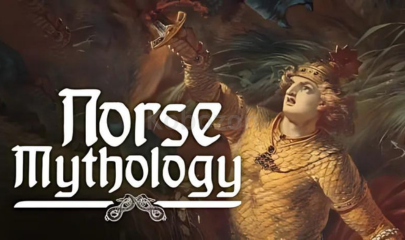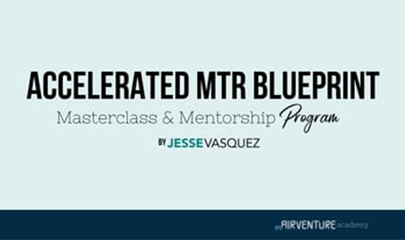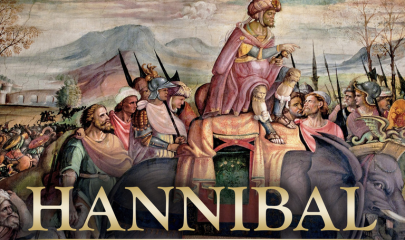-
×
 The Secrets to Financial Mastery By John Demartini
1 × $209,00
The Secrets to Financial Mastery By John Demartini
1 × $209,00 -
×
 The Virtual Workshop By John Wineland
1 × $39,00
The Virtual Workshop By John Wineland
1 × $39,00 -
×
 Creative Text Effects in Adobe Photoshop CC By Corey Barker
1 × $5,00
Creative Text Effects in Adobe Photoshop CC By Corey Barker
1 × $5,00 -
×
 The Holy Land Revealed By Jodi Magness
1 × $5,00
The Holy Land Revealed By Jodi Magness
1 × $5,00 -
×
 Turning Points in Middle Eastern History By Eamonn Gearon
1 × $5,00
Turning Points in Middle Eastern History By Eamonn Gearon
1 × $5,00 -
×
 Norse Mythology By Jackson Crawford
1 × $5,00
Norse Mythology By Jackson Crawford
1 × $5,00 -
×
 Association Domination Masterclass By Perry Belcher
1 × $6,00
Association Domination Masterclass By Perry Belcher
1 × $6,00 -
×
 Pen Tool in Illustrator By Jason Hoppe
1 × $5,00
Pen Tool in Illustrator By Jason Hoppe
1 × $5,00 -
×
 The Miracle of Self Discipline Package By Brian Tracy
1 × $39,00
The Miracle of Self Discipline Package By Brian Tracy
1 × $39,00 -
×
 Compound Butterfly Blueprint (Elite Package) By Allison Ostrander - Simpler Trading
1 × $62,00
Compound Butterfly Blueprint (Elite Package) By Allison Ostrander - Simpler Trading
1 × $62,00 -
×
 6th Dimension Lifetime Access By Elisa Canali
1 × $23,00
6th Dimension Lifetime Access By Elisa Canali
1 × $23,00 -
×
 How You Decide: The Science of Human Decision Making By Ryan Hamilton
1 × $5,00
How You Decide: The Science of Human Decision Making By Ryan Hamilton
1 × $5,00 -
×
 Bond Market Course By The Macro Compass
1 × $15,00
Bond Market Course By The Macro Compass
1 × $15,00 -
×
 60 Minutes Stamina By MSH Publishing
1 × $31,00
60 Minutes Stamina By MSH Publishing
1 × $31,00 -
×
 The Accelerated MTR Blueprint Masterclass 2023 By Jesse Vasquez
1 × $699,00
The Accelerated MTR Blueprint Masterclass 2023 By Jesse Vasquez
1 × $699,00 -
×
 100K Offer System 2.0 By Kathryn Porritt
1 × $39,00
100K Offer System 2.0 By Kathryn Porritt
1 × $39,00 -
×
 CFO Excel Dashboard And Reporting By Josh Aharonoff
1 × $23,00
CFO Excel Dashboard And Reporting By Josh Aharonoff
1 × $23,00 -
×
 Master Phone Training By Andy Elliott
1 × $194,00
Master Phone Training By Andy Elliott
1 × $194,00 -
×
 Best Workflow Practices for Architectural Photography By Mike Kelley
1 × $5,00
Best Workflow Practices for Architectural Photography By Mike Kelley
1 × $5,00 -
×
 Trading NQ At The US Open By TradeSmart
1 × $10,00
Trading NQ At The US Open By TradeSmart
1 × $10,00 -
×
 Hannibal: The Military Genius Who Almost Conquered Rome By Eve MacDonald
1 × $5,00
Hannibal: The Military Genius Who Almost Conquered Rome By Eve MacDonald
1 × $5,00 -
×
 Training the Electric/Magnetic Lines of Force with Movement By Sixty Skills
1 × $15,00
Training the Electric/Magnetic Lines of Force with Movement By Sixty Skills
1 × $15,00 -
×
 This Day in History: August By Wondrium
1 × $5,00
This Day in History: August By Wondrium
1 × $5,00
Classic Croissants, Modern Techniques By Colette Christian
$39,00 $5,00
Classic croissants: Modern techniques by Colette Christian – Digital Download!
Let’s embark on a captivating adventure to uncover remarkable insights that spark your curiosity and elevate your understanding

Classic Croissants, Modern Techniques By Colette Christian
Overview

Classic croissants: Modern techniques by Colette Christian
Classic croissants are not merely a pastry; they are a celebration of finesse and meticulous craftsmanship. Renowned for their flaky, buttery texture and delicate layers, croissants are a quintessential French delight enjoyed by many around the globe. The art of croissant-making involves a fascinating process known as lamination, where dough is rolled and folded with butter several times, creating thin, ethereal layers that give rise to the croissant’s signature airy structure. This culinary masterpiece, however, requires patience, precision, and a touch of creativity qualities that Colette Christian expertly brings forth in her class, “Classic Croissants: Modern Techniques.”
In this plethora of information, we will delve deeper into the intricate world of croissants, examining the techniques taught by Colette Christian and the artistry involved in crafting these delectable pastries. We’ll explore the step-by-step process that transforms mere flour, water, and butter into the golden, flaky pastries many adore. Get ready to embark on a culinary journey that promises not just knowledge but also an appreciation for the craftsmanship behind classic croissants.
The anatomy of classic croissants
To truly appreciate the artistry behind classic croissants, it is crucial to understand their anatomy. Each croissant is a symphony of textures and flavors, achieved through a detailed process of lamination. The dough primarily consists of flour, water, milk, sugar, salt, yeast, and, most importantly, a generous amount of European-style butter, known for its higher fat content and lower water percentage. This creates a dough that has the perfect balance of richness and structure.
Key ingredients and their significance
- Flour: The foundation, usually a high-protein variety for optimal gluten development.
- Butter: European-style butter with at least 82% fat for a rich mouthfeel and minimal water content.
- Yeast: The magical ingredient that helps the dough rise, providing the necessary aeration.
- Milk and Water: They ensure the dough remains hydrated and contributes to the overall flavor.
The first step in crafting these delights involves preparing the dough, which must then rest and chill. This resting period is essential as it allows the gluten to relax, preparing the dough for the rigors of rolling and folding. A hasty process will compromise the final texture, so patience is a baker’s best friend.
The lamination process
Once the dough is chilled, it undergoes a transformation through the lamination process. The dough is rolled out into a large rectangle, within which softened slabs of butter are encased. By folding and rolling the dough multiple times, the baker creates layers that are the hallmark of croissants. After shaping the dough into triangles and rolling them up, they are left to proof until puffy and doubled in size. This crucial step allows the yeast to work its magic, enhancing flavor and texture, leading to the final product’s lightness.
The baking phase: A moment of truth
The final act in croissant preparation is the baking phase. This is where careful attention ensures that the golden pastries achieve their characteristic glossy finish. An egg wash, usually a blend of egg and water, is brushed over each pastry before they go into a preheated oven, which serves to expedite the puffing of the dough layers.
Baking tips and techniques
- Temperature: Preheat the oven adequately to ensure rapid baking.
- Timing: Monitor closely, as baking usually ranges from 20 to 30 minutes, culminating in a glorious golden-brown color and an inside that is perfectly cooked.
- Oven setting: Use convection if available, ensuring even heat distribution.
The result, when executed correctly, is a divine croissant with an irresistible flaky crust and a rich, buttery interior a true feast for both the eyes and the palate. While mastering this art requires significant time and effort, those who have taken the plunge often describe the experience as tremendously rewarding.
A modern twist with Colette Christian
Colette Christian’s course, “Classic Croissants: Modern Techniques,” is an innovative endeavor that takes the traditional craftsmanship of croissant-making and applies contemporary pedagogical methods to make it accessible to bakers of all levels. This course is not merely about baking; it’s a journey through the complexities of dough lamination, clearly broken down into manageable and understandable steps that even novice bakers can embrace.
Comprehensive lessons designed for all levels
The course spans various topics essential for mastering the creation of both classic and modern croissants. Some of the key areas covered include:
- Making Croissant Dough: Understand the balance of dough and butter layers.
- Rolling and Folding Techniques: Master the essential techniques needed for perfect layering.
- Shaping and Variants: Learn to shape traditional croissants and explore variations like almond croissants and pain au chocolat.
- Dough Preparation Without Mixers: A section dedicated to those without access to electric mixers, emphasizing accessibility.
These lessons are made available through on-demand video access, enabling aspiring bakers to learn at their convenience. The course also offers downloadable resources, ensuring that participants can revisit critical techniques and tips at any time.
Engaging materials and resources
Colette’s approach is rooted in creating a solid foundation for each student, providing materials that enhance the learning experience. On platforms like Craftsy or The Great Courses Plus, participants can access her instructional material, fostering an engaging educational experience. The thoughtfully designed resources cater to varied learning styles, ensuring that every baker can find their rhythm in creating croissants.
Key offerings of the course:
- On-demand video tutorials: Watch at your pace, rewinding and pausing as needed.
- Downloadable recipes and guides: Reference materials that serve as handy reminders.
- Access to community forums: Engage with fellow bakers, share experiences, and ask questions.
- Expert insights from Colette: Benefit from Colette’s years of expertise, with tips curated from her professional journey.
Through this extensive curriculum, bakers can not only refine their skills but also cultivate a deeper understanding of the science behind pastry-making.
The art of modern pastries and innovation
As we venture further into the realm of baking, it’s essential to understand that Colette Christian’s teachings extend beyond just croissants. The course encourages creativity, allowing bakers to experiment with flavors, fillings, and shapes. Modern pastry arts embrace innovations, and this class acts as a springboard, inspiring students to infuse their personalities into their bakes.
The evolution of flavors and textures
The art of making croissants has evolved significantly, with contemporary bakers experimenting with new flavors and textures. Some variations that have piqued interest include:
- Almond Croissants: Filled with almond paste and topped with sliced almonds.
- Pain au Chocolat: A delightful twist featuring rich chocolate in the center.
- Savory Variants: Incorporating ingredients like cheese, ham, or herbs.
Each of these options allows bakers to play with fillings and flavors, creating delightful eating experiences that transcend traditional boundaries. This level of creativity transforms simple pastries into personal stories told through taste.
Cultural significance and traditional lore
Beyond just the art of baking, croissants hold cultural significance, symbolizing French culinary excellence. The croissant’s history, rich with folklore, is often intertwined with tales of bakers and their quests for the perfect pastry. Understanding this narrative adds depth to every bite, bringing forth not just taste but history and tradition.
Conclusion: Embracing the journey of croissant-making
The adventure of creating classic croissants using modern techniques taught by Colette Christian is much more than just whipping up a batch of pastries. It represents a journey filled with patience, precision, creativity, and, above all, passion. By grasping the underlying principles of dough and technique, bakers can enjoy not only the fruits of their labor but also the fulfillment that comes with mastering a culinary art form.
As you embark on your own croissant-making endeavors, remember that every flaky bite tells a tale a story of dedication, wishes, and the flavors that unite us over a shared love for pastries. The journey toward mastering croissants may be long and filled with trials, but the results enhance not just your kitchen repertoire but also your appreciation for one of the world’s most beloved pastries. So gather your ingredients, roll up your sleeves, and let the world of croissants unfold its delicious secrets just waiting for you to explore.
Frequently Asked Questions:
Innovation in Business Models: We use a group purchase approach that enables users to split expenses and get discounted access to well-liked courses. Despite worries regarding distribution strategies from content creators, this strategy helps people with low incomes.
Legal Aspects to Take into Account: Our operations’ legality entails several intricate considerations. There are no explicit resale restrictions mentioned at the time of purchase, even though we do not have the course developers’ express consent to redistribute their content. This uncertainty gives us the chance to offer reasonably priced instructional materials.
Quality Control: We make certain that every course resource we buy is the exact same as what the authors themselves provide. It’s crucial to realize, nevertheless, that we are not authorized suppliers. Therefore, the following are not included in our offerings: – Live coaching sessions or calls with the course author.
– Entry to groups or portals that are only available to authors.
– Participation in closed forums.
– Straightforward email assistance from the writer or their group.
Our goal is to lower the barrier to education by providing these courses on our own, without the official channels’ premium services. We value your comprehension of our distinct methodology.
Be the first to review “Classic Croissants, Modern Techniques By Colette Christian” Cancel reply
You must be logged in to post a review.
















Reviews
There are no reviews yet.